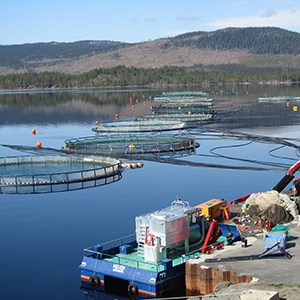In a future, circular economy, it is desirable that mineral nutrients from fish wastes are utilized for plant production in agriculture and horticulture. Challenges related to the closing of the loop between aquaculture and agriculture are collection and treatment of the waste to preserve nutrients as well as the formulation of efficient fertilizers.
Commercial fish production is an important industry in the Nordic countries. However, the increasing environmental challenges related to the disposal of fish wastes from both open and closed fish cages need to be addressed. At the same time, mineral nutrients present in the fish wastes are needed as fertilizers in agricultural and horticultural plant production. However, efficient methods for collection and treatment of the waste to preserve essential nutrients are needed, as well as optimization of fish-based fertilizer composition with the aim of fulfilling plant requirements.
The aim of the project is to explore and summarize the state-of-the-art knowledge on the use of fish waste for plant production and discuss challenges and potential solutions.
Partners involved
Main Applicant:
- Siri Caspersen, Department of Biosystems and Technology, NJ-Faculty at SLU.
Co-applicants:
- Anders Kiessling, Department of Animal Nutrition and Management, VH-Faculty at SLU.
